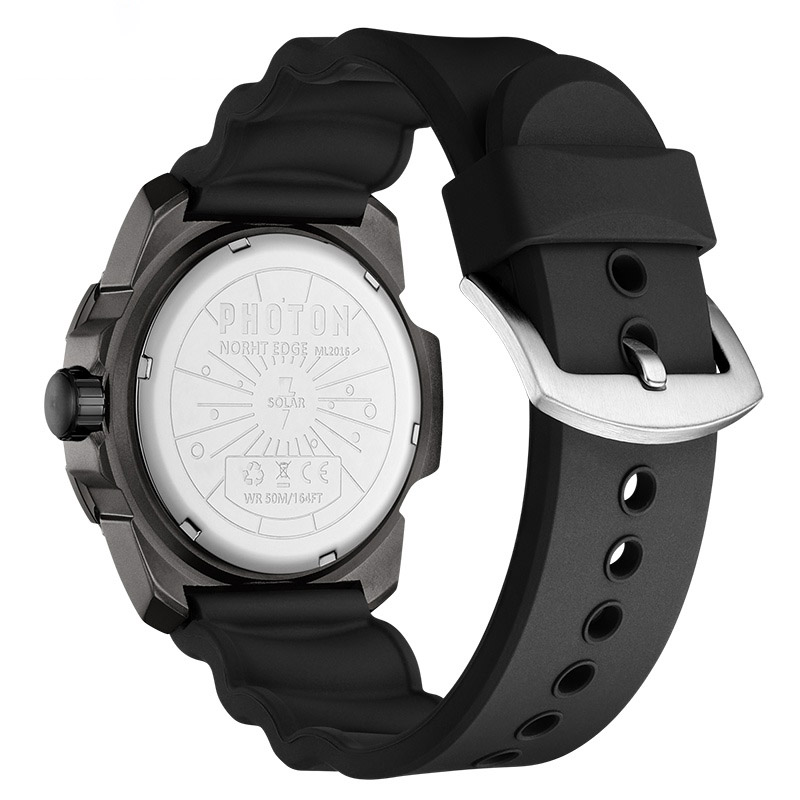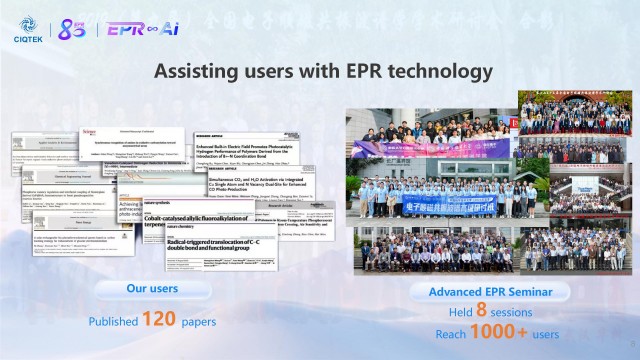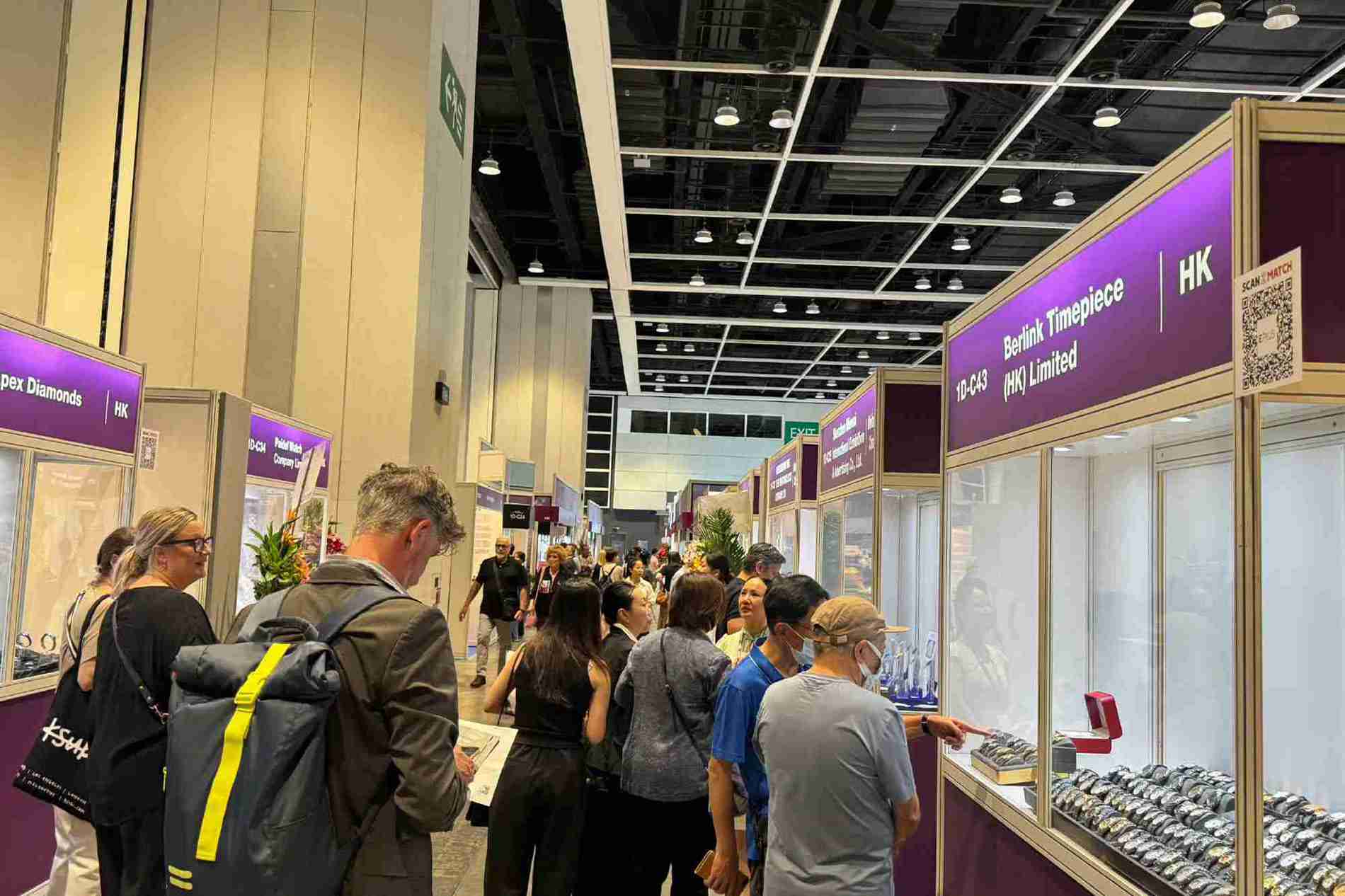How Solar Watches Work



Today, I'm excited to share some big news with all of you. NORTH EDGE has just released an amazing solar-powered watch -- PHOTON that's set to change the game!
The idea behind this watch was to create something that not only tells time accurately but also does so while being kind to the planet. We all know how important it is to reduce our carbon footprint, and PHOTON is our contribution to that effort.
The beauty of this solar watch PHOTON is that it charges itself whenever it's exposed to light. Whether you're out in the sun or under indoor lighting, it keeps gathering energy to keep running. And don't worry about its performance - it's as reliable as it is stylish.
The design team has worked hard to make this watch a fashion statement. It's not just a watch; it's a reflection of your commitment to a sustainable lifestyle.
We believe this solar-powered watch is more than just a product; it's a symbol of our company's dedication to innovation and making a positive impact on the world. So, join us in this journey towards a greener future with NORTH EGDE PHOTON!

1. A North Edge watch that is water resistant to 50 meters, it's perfect for daily activities like hand washing and getting caught in the rain. While it may not be intended for deep-sea dives, it can handle brief immersions without a problem.
2. A North Edge watch with 100 meters water resistance is a great choice for activities such as swimming and snorkeling. You can feel confident taking it into the water, knowing that it can handle the pressure and keep ticking. In the sea, it could be safely used at depths of up to around 30 to 50 meters as a conservative estimate.
3. A North Edge watch rated for 200 meters water resistance is ideal. Whether you're scuba diving or engaging in other intense water activities, this watch will not disappoint. In the sea, it could generally be safely used at depths up to around 70 to 100 meters as a practical limit.
-----------------------------
The Future of Optimizing Conference Room Management Currently, the hotel has equipped its conference rooms with 20 Chromebooks, each with a power rating of 45W, which need to be charged collectively after use. However, manually managing the charging of these devices can often be time-consuming and cumbersome. To address this, the hotel sought an efficient and convenient charging solution, and LVSUN's newly launched charging product perfectly meets this need. The new LVSUN 1000W charging station is equipped with 20 USB-C ports In addition to its powerful charging capability, LVSUN also provides fast-charging TYPE-C cables to ensure that devices can be charged quickly and efficiently. Even more exciting is that this charging device supports a mobile app Streamlining Conference Room Management to Improve Work EfficiencyWith the introduction of the LVSUN charging docks, the management process of conference room equipment can be effectively streamlined. When the administrator consolidates the charging of Chromebooks, they only need to set the schedule and can focus on other tasks. This intelligent management approach not only enhances the availability of conference room equipment but also significantly boosts the team's work efficiency. Overall, LVSUN's new USB-C charging dock

CIQTEK FIB-SEM Practical Demonstration
Focused Ion Beam Scanning Electron Microscope (FIB-SEM) are essential for various applications such as defect diagnosis, repair, ion implantation, in-situ processing, mask repair, etching, integrated circuit design modification, chip device fabrication, maskless processing, nanostructure fabrication, complex nano-patterning, three-dimensional imaging and analysis of materials, ultra-sensitive surface analysis, surface modification, and transmission electron microscopy specimen preparation.
CIQTEK has introduced the FIB-SEM DB550, which features an independently controllable Field Emission Scanning Electron Microscope (FE-SEM) with Focused Ion Beam (FIB) Columns. It is an elegant and versatile nanoscale analysis and specimen preparation tool, that adopts “SuperTunnel” electron optics technology, low aberration, and non-magnetic objective design with low voltage and high-resolution capability to ensure the nano-scale analysis. The ion column facilitates a Ga+ liquid metal ion source with a highly stable, high-quality ion beam to ensure nano-fabrication capability. DB550 has an integrated nano-manipulator, gas injection system, electrical anti-contamination mechanism for the objective lens, and user-friendly GUI software, which facilitates an all-in-one nanoscale analysis and fabrication workstation.
To showcase the outstanding performance of the DB550, CIQTEK has planned a special event called "CIQTEK FIB-SEM Practical Demonstration." This program will present videos demonstrating the broad applications of this cutting-edge equipment in fields such as materials science, the semiconductor industry, and biomedical research. Viewers will gain an understanding of the working principles of the DB550, appreciate its stunning microscale images, and explore the significant implications of this technology for scientific research and industrial development.
Preparation of a transmission specimen of Ferrite-martensite steel
The FIB-SEM DB550 developed by CIQTEK possesses the capability to prepare transmission specimens of ferrite-martensite steel flawlessly. This capability enables researchers in the nanoscale domain to directly observe the interface characteristics, microstructural morphology, and evolution process of ferrite and martensite phases. These observations are crucial steps toward deepening the understanding of the relationship between phase transformation kinetics, microstructural organization, and mechanical properties of ferrite-martens steel.

On October 19th, at the 2024 National Conference on Electron Paramagnetic Resonance Spectroscopy, CIQTEK unveiled a new AI Electron Paramagnetic Resonance (AI-EPR) spectroscopy. This series of products incorporates AI capabilities and achieves the world's highest signal-to-noise ratio of 10,000:1, marking a significant breakthrough in the field of EPR spectroscopy.

Revolutionary breakthrough addressing industry challenges
EPR technology plays a crucial role in detecting unpaired electron structures and dynamics in materials, and it finds wide applications in fields such as chemistry, physics, biology, and medicine. However, acquiring and analyzing EPR spectra poses various challenges, including low signal-to-noise ratios, multiple parameters, and complex models. Artificial Intelligence (AI) is a discipline that studies and implements intelligent behavior and possesses powerful data processing and knowledge acquisition capabilities, offering effective tools and methods for optimizing, fitting, interpreting, and predicting EPR spectra.

CIQTEK has autonomous development capabilities for a full range of EPR spectroscopy and possesses key core technologies, laying a solid foundation in hardware and system integration. The newly unveiled product elevates the signal-to-noise ratio to 10,000:1, significantly enhancing the accuracy of instrument detection and setting a world record in this aspect for commercial EPR spectroscopy. Moreover, AI-EPR incorporates two core capabilities: AI-driven spectrum analysis and intelligent literature correlation. This will completely transform the way researchers conduct EPR studies, greatly improving research efficiency and precision.
Making instruments smarter and research more effortless

AI-driven spectrum analysis: AI analysis capability covering 90% of sample types reduces the complex analysis process from several hours or even days to just a few minutes. The widespread adoption of this feature means that EPR technology will play a crucial role in a broader range of scientific research fields.
Intelligent literature correlation: Through the "spectrum recognition and source searching" function, AI-EPR can automatically link to global literature databases, providing researchers with highly relevant academic resources. This feature not only accelerates knowledge dissemination but also facilitates interdisciplinary innovation and breakthroughs.

Dr. Xu Kebiao, Vice President of CIQTEK, stated, "The breakthrough achievement of AI-EPR not only enhances product performance in terms of hardware and software but also addresses the main challenges faced by current EPR technology. It is expected to stimulate new research directions and application scenarios, significantly enhancing China's international influence in the field of Electron Paramagnetic Resonance spectroscopy. In the future, CIQTEK EPR Spectroscopy will uniformly support AI."
The 2024 Hong Kong Watch & Clock Fair was truly an unforgettable event for any watch enthusiast or industry professional.
The exhibition halls were filled with a dazzling array of timepieces from all over the world. The variety was astonishing - from classic, elegant watches that exuded timeless charm to cutting-edge, high-tech smartwatches that showcased the latest in wearable technology.
One of the highlights for exhibition was exploring the different themed areas. The "World Brand Piazza" was a real treat, featuring limited edition and rare timepieces from renowned international brands. It was like a treasure trove for collectors and connoisseurs. The "Trend and Fashion" section was abuzz with the latest styles and designs, with brands like ice-watch and infantry presenting their trendy offerings. The "Exquisite Craftsmanship" area showcased the intricate art of mechanical watchmaking and the beauty of jewelry-encrusted timepieces. And let's not forget the "Smart Watches" section, where the future of timekeeping was on display with the latest in smart technology and connectivity.



-----------------------------
We also had the pleasure of attending some of the seminars and workshops during the fair. Industry experts shared their insights on market trends, design innovation, and the future of the watch and clock industry. It was not only informative but also provided a great platform for networking and exchanging ideas with fellow enthusiasts and professionals.
The energy and enthusiasm at the fair were palpable. People were engaged in lively conversations, admiring the watches, and doing business. It was clear that this event is a crucial gathering for the global watch and clock community, bringing together manufacturers, designers, retailers, and collectors under one roof.
All watch lovers were already looking forward to the next edition, with a head full of inspiration and a newfound appreciation for the art and science of watchmaking.
When it comes to climbing mountains, an outdoor watch can be an invaluable tool. And when it comes to reliable outdoor watches, North Edge watch is a brand that stands out. It not only helps us keep track of time but also provides various useful functions like altitude measurement, barometer readings, and compass directions, which are essential for a safe and enjoyable mountain climbing experience.
1. Before climbing, make sure the North Edge outdoor watch is fully charged or has sufficient battery life. This is crucial as you don't want your watch to run out of power in the middle of your adventure, especially when you rely on its functions for navigation and monitoring.
2. Familiarize yourself with the functions of the watch, such as the altimeter, barometer, and compass. North Edge watches are equipped with these advanced features, and knowing how to use them correctly will enhance your climbing experience and ensure accurate readings.
3. Wear the watch firmly to prevent it from falling off during the climb. A secure fit is essential, especially in rugged terrains where sudden movements or impacts can cause the watch to loosen or fall. North Edge watches often come with adjustable straps or bracelets that allow you to find the perfect fit for your wrist.
4. Protect the watch from impacts and scratches. Avoid knocking it against hard objects. The durability of North Edge watches is designed to withstand outdoor conditions, but excessive impacts can still damage the watch.
5. In bad weather conditions, such as heavy rain or snow, take proper measures to protect the watch from water damage.
6. Regularly check the accuracy of the watch's functions, especially the altimeter and compass. North Edge watches are known for their accuracy, but regular checks are necessary to ensure that you are getting reliable readings.
7. When not in use, store the watch in a safe and dry place to prevent damage. A proper storage environment will extend the lifespan of your North Edge watch.
In conclusion, following these precautions when using a North Edge outdoor watch during mountain climbing can enhance our safety and enjoyment of the outdoors.